If, like me, you started reading car magazines in the late 1990s, you will probably remember when ‘perceived quality’ became a thing. At least as far as volume car making is concerned, it was a Volkswagen invention, and it arrived with the fourth-generation Volkswagen Golf hatchback.
This was the car that, they say, Volkswagen Group autocrat Ferdinand Piëch ordered back to the drawing board because he didn’t like being able to see the seat adjustment rails in the front footwell. Imagine living with him as your boss. Give me quiet mediocrity any day.
For model generations thereafter, Volkswagen-brand quality became so much about the detail: the look and feel of a column stalk or the reassuring click of a heater knob. But now we’re fully four Golf generations and more than two decades later, it seems that a shift in thinking has finally occurred in Wolfsburg about how Europe’s best-selling family hatchback should distinguish itself.

The new, Mk8 Golf has had a great many of the buttons and switches of its forebears simply designed out of it. It has gone all ‘reductionist’ – and as much as I understand why you might groan at that, it turns out that in this case you really needn’t.
As you sit in the driving seat, discounting the small but relatively busily populated steering wheel spokes and door consoles, you’ll find around you discrete, physical, moving secondary controls for only the electronic handbrake, door locks and hazard warning lights. There’s an engine starter button, a gearlever and pedals, and a couple of column stalks too. Otherwise, that’s it. Welcome to Volkswagen cabin 2.0.
It may be ironic, therefore, having done so much to turn the chrome-ringed, haptically satisfying volume knob into an art form, that Volkswagen is now joining the ranks of car firms that are putting moving cabin switchgear out to pasture. But moreover, isn’t it a bit of a risk? How will a Golf look and feel like a familiar, classy old Golf without air conditioning controls that you would guess must have been at least as expensively and painstakingly engineered as the gearshift quality?
I pondered exactly the same questions before spending time in this car; now that I have, not so much. Despite its newly minimalist philosophy, the latest Golf’s interior works as well as any I can remember, once you’re used to operating it, and there are still ways in which it’s a cut above its opposition for solid, classy material look and feel.

We’ll get to those. Introductions first. The particular Golf we picked for this first comparison exercise was chosen to represent the car at a pretty modest and broadly relevant level – and yet, even at that level, it’s anything but ordinary.
Now that 48V mild-hybrid options have been added to a powertrain range that will eventually include at least one plug-in hybrid and several performance versions, you could say the Golf line-up is somewhat complicated. So we thought it best to keep things simple to begin with, hence the 129bhp 1.5-litre four-cylinder turbocharged petrol engine and six-speed manual gearbox of our entry-level Life-trim test car.
It also has standard passive suspension, a torsion-beam axle at the rear, the boggo 16in alloy wheels and cloth seats.
The car the Golf sits next to in this test is the modern version of what has undoubtedly been its notionally and formatively key rival: the Ford Focus.
For within £40 of the price of the Golf and in our Focus as tested (with the 123bhp 1.0-litre three-cylinder turbo petrol engine), you get mid-level Titanium X rather than base spec, meaning part-leather electric seats and 17in alloys as standard.
To run either of these as a company car would cost near enough exactly the same in benefit-in-kind tax, and they’re within £11 per month of each other on a three-year manufacturer PCP deal (at advertised prices).

Even so, the Focus does without a host of technology that the Golf gets at no extra cost even as a bottom-rung model. Fully digital instruments, adaptive cruise control, wireless smartphone charging, all-LED headlights… and the Golf has a bigger and better touchscreen infotainment system, too.
To top it all, this is a sub-£25,000 car with a fully networked ‘802.11p’ wireless communication, which can communicate not just with other cars but, in theory, also street lights and dynamic road signs up to a mile away on the road to warn you of changing speed limits and potential hazards up ahead. As it may not surprise you to learn, the Focus can’t do that. As far as this tester is aware, nothing else in the class can either. Europe’s best-selling hatchback just got seriously clever.
Get a feel for it
Some things in the Golf remain recognisable: the nicely low, couched driving position (notably better than the one in the Focus), the general proportions of your surroundings (there’s still plenty of cabin width and room for adults to sit pretty comfortably in the back) and a few of the fittings. Yet the surprisingly clean-looking centre console and the eerily smooth, glossy-back, flight-console-like swathe of plastic that curves around behind the steering wheel and across the top of the centre stack are both new. The latter definitely owes plenty to the current Mercedes-Benz interior design playbook, but the way it’s shaped and angled towards the driver gives it a vibe all of its own.
The 10in infotainment touchscreen is the first port of call to activate and adjust most of the Golf’s secondary systems, and there are a few capacitive shortcut ‘buttons’ underneath it to help you get to a particular function quickly, such as changing the air-con distribution or deactivating the parking sensors.
But while it’s not actually a pain to navigate at all, you needn’t go through that central touch-sensitive monolith for absolutely everything. Most importantly, the buttons on the steering wheel spokes give you access to most of the systems and settings you’ll need while driving without taking your hands off the wheel, and you need only look at the instrument binnacle while you’re doing it.
Volkswagen has also cleverly included good-sized heater controls just underneath the touchscreen, on which you can very simply swipe left and right to adjust the temperature of the cabin. There’s an audio volume control that works the same way. These are fixed in place, so you can learn to find them without taking your eyes off the road, and they’re simple enough to work well at arm’s length at the first time of asking. There you go: a genuinely simple and easy-to-use ‘touch-sensitive’ dashboard design has arrived.
This is going to sound very much like I’ve drunk deep of the Volkswagen-brand Kool-Aid, but to get into the Focus and look around after using the Golf for a few days made me genuinely wonder why a car interior needed so many little knobs and switches just to rattle and squeak and gather dust. That was a first, I can tell you. I’ve always liked a button.
The Focus’s interior isn’t that distantly separated from the Golf’s on perceived quality; it’s just that the latter car seems to deploy its richer materials better and make its cheaper ones slightly less shiny and conspicuous. And what about real build quality? Well, lean your left knee on the side of the transmission tunnel in the Focus and it deforms and creaks just a little; in the Golf, it does neither. That says it all, doesn’t it?
Better and best
Another sort of minimalism applies to what powers these two cars. Twenty years ago, we’d have needed a 1.8-litre or 2.0-litre petrol engine to produce around 130bhp; now we can get it from a 1.5-litre turbo four-pot in the Golf’s case and a 1.0-litre turbo three-pot in the Focus’s. What engines they are, by the way: very highly developed, lean-running operators. The Golf’s can run on the Miller cycle to boost efficiency, as well as deactivating half of its cylinders, while the Focus’s can run on just two cylinders under light loads.

The upshot is that the Ecoboost engine can easily return 55mpg on a longer, 50-80mph variable-cruising-speed, UK-typical motorway run. The TSI (thanks to the Golf’s newly aerodynamic body design, I suspect) can top 60mpg. Ten years ago, the most frugal diesel engines in the predecessors of these two models would have struggled to better such figures. There’s still nothing like a potential death sentence to speed along the technical development process, clearly.
Both engines have accessible torque and good drivability, but it’s the Golf’s that feels marginally the stronger through the mid-range and that has the better cruising manners and mechanical refinement. But while the Focus’s doesn’t pull the higher gears as easily, it’s much the sweeter to wring out – aided by a far slicker and more readily hurried manual gearbox.
That’s the first route by which the Focus announces itself – still – as the natural choice for the keen driver. The second is the same way it always has: through a world-class chassis with which the Golf can’t really compete, even now that it has been slightly overhauled.

This Golf’s ride is certainly firmer than that of any basic Golf I’ve driven previously. It has good, close, upright body control that doesn’t start to get soggy and floaty when you tackle a tougher country road with a bit of speed, plus steering with a clearer sense of off-centre responsiveness than it used to, making shorter work of roundabouts and junctions. Sure enough, it feels just a little bit sporty.
And yet the Focus remains in another dimension for driver appeal. Firmer still around town and at low speed, it needs to be challenged with speed and surface change to show its hand – and when it does, the handling precision and the sophistication of its damping really do leave you stuck for words. All of that and the Focus’s ride is also somehow better isolated than the Golf’s. There remain very few mainstream, common-or-garden passenger cars like this Ford, so very plainly dynamically superior.
A hint of elasticity blunts the edge of the steering for outright feel, but it’s so much quicker and more incisive than that of the Golf that you handle the Focus in a markedly different way. Whereas the Golf requires bigger physical inputs, you steer the Ford from your wrists, getting around most corners without needing to move your hands on the rim at all, or your elbows from their respective rests.
That intuitive sense of agility, of such little energy wasted in body roll and of chassis composure way beyond what an ordinary family hatchback really needs, is what characterises the Focus driving experience – as vividly now, although perhaps not quite as impactfully, as it ever has.
And so the humble Focus remains a deeply special, not-so-humble thing after all. But it’s the greater breadth of appeal of this latest Golf, and the sense that it’s a car of even greater significance, that our verdict must recognise. In a family hatchback market in which interested drivers aren’t so common but active safety, connectivity and technological sophistication and usability rise ever higher among what actually sells, the Golf has managed to break new ground from its familiar position right at the notional centre.
If that weren’t remarkable enough, it now offers more to enthusiasts than it used to, while retaining most of its maturity and roundedness and making the kind of strides on efficiency that ought to keep it relevant and put some money in your pocket.
This is a different Golf, true enough, slightly less comfortably pipe-and-slippers in its character, and just a touch more dialled in and switched on, but the truth is that it’s probably a stronger real-world operator than ever.
Used alternatives
If you don’t want to fork out for a factory-fresh family hatchback, the long-standing popularity and dependable reputation of the Focus and Golf make previous-generation examples equally enticing propositions.
To make things easier, both cars follow similar development cycles, so venturing back 10 years takes us back two generations to the comparable Mk6 Golf and Mk3 Focus. Think big. How about a 2010 Golf GTI, still an impressive hot hatch, for £7500? Or its lairy Focus ST contemporary for just £50 more? Both are exceedingly clean and wouldn’t embarrass themselves in a showdown with their modern descendants.
More sensible versions of the Golf and Focus can be had for less money, even if you fancy a newer model. A frugal 2015 1.0-litre turbo petrol Focus can be snapped up for a hair under £6000, while a 1.6-litre diesel Golf from the year after is an absolute bargain at £5395. And let’s not forget: these aren’t old models, so they come fitted with most of the bells and whistles of our shiny new test cars.

2015 Volkswagen Golf 1.4 TSI GTE, £12,750: Not the cheapest Mk7 Golf in the classifieds, granted, but the GTE is often hailed as the sweet spot in the line-up. This one is five years old but appears to have aged well, with a full service history and niceties such as unmarked leather and a reversing camera. We’d expect it to still be capable of about 43mpg and more than 25 miles of electric driving in town.

2018 Ford Focus 1.5 TDCi ST-Line, £12,000: For roughly the same price, you can have a Focus with the frugality of a diesel and the kerb appeal of the revered ST. The rather gutless 1.5-litre TDCi engine won’t set your world on fire but is mighty cheap to run, and this car’s manual gearbox sweetens the deal for keen drivers needing a dependable daily driver.
READ MORE
Volkswagen Golf 1.5 TSI 130 Life 2020 UK review

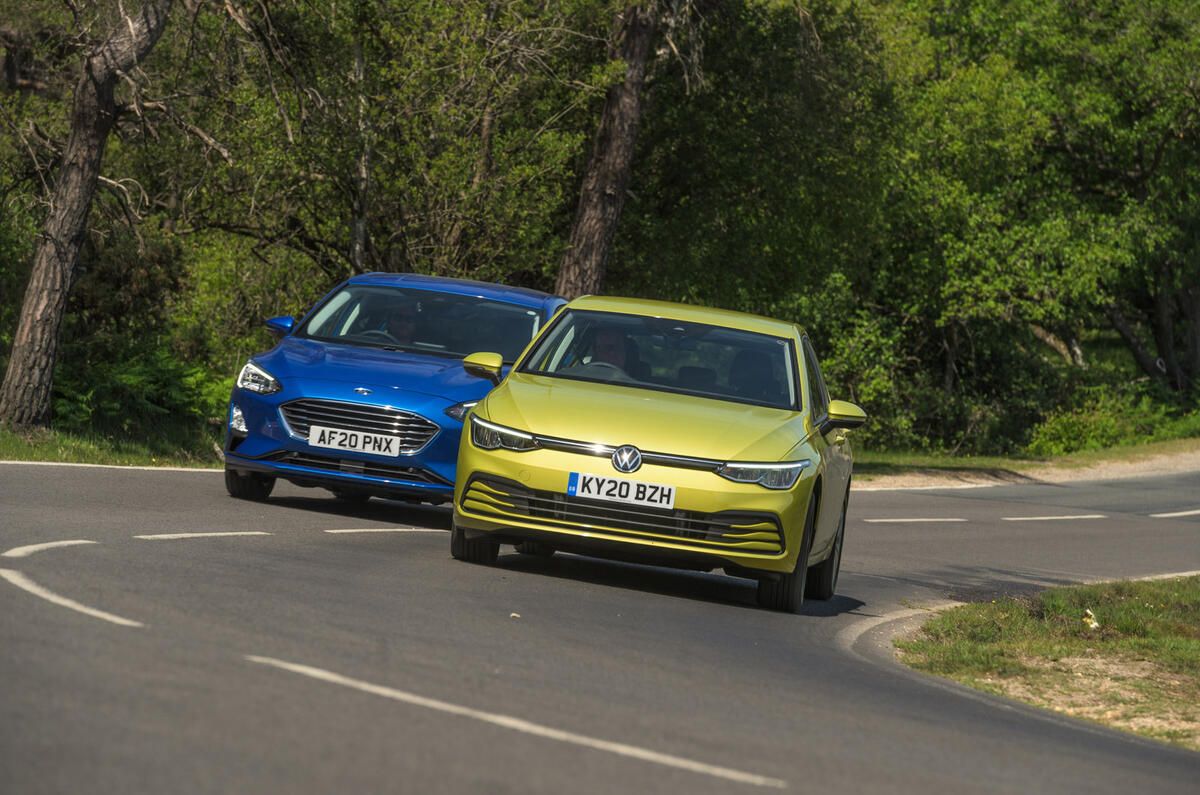
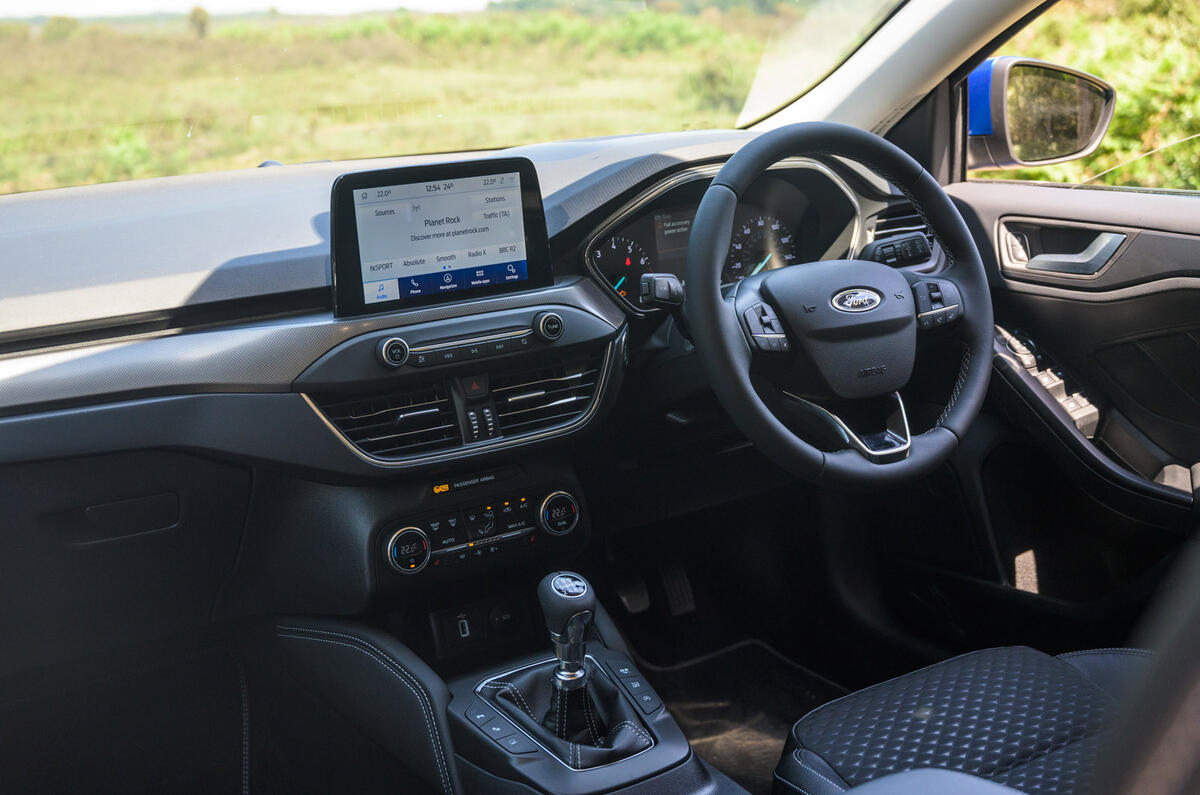

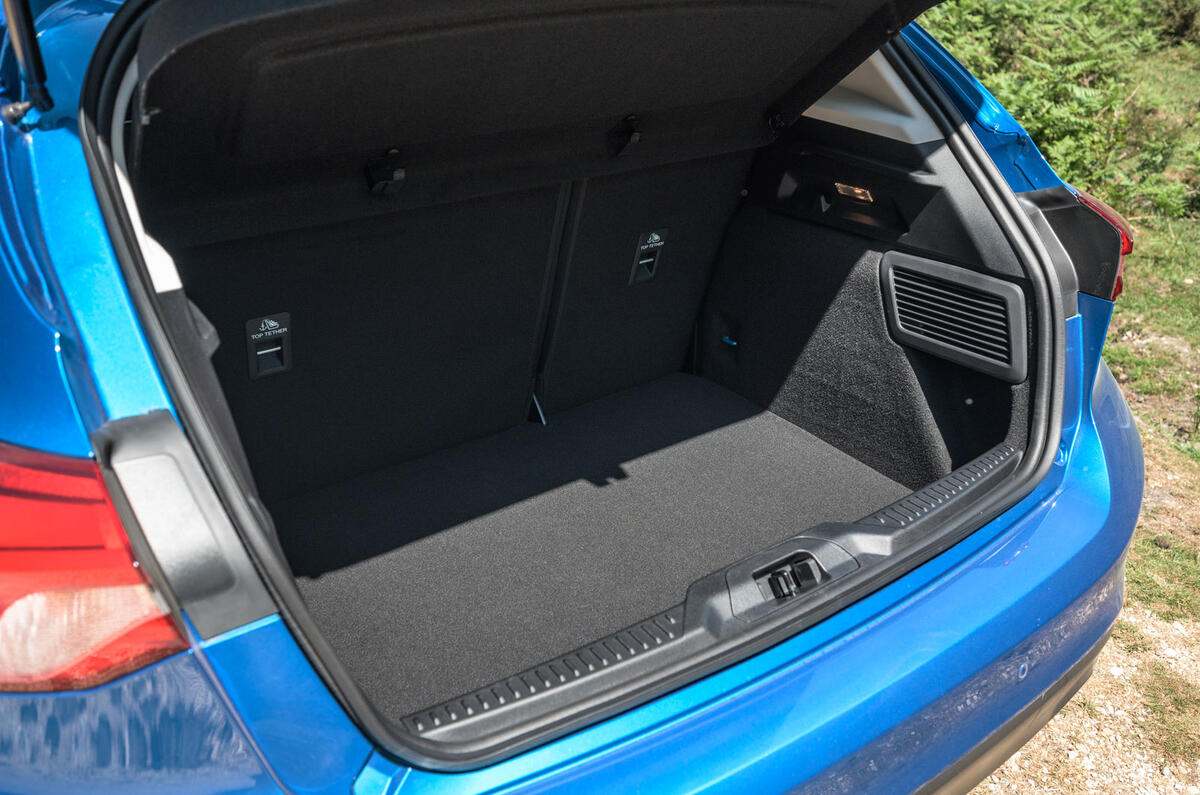
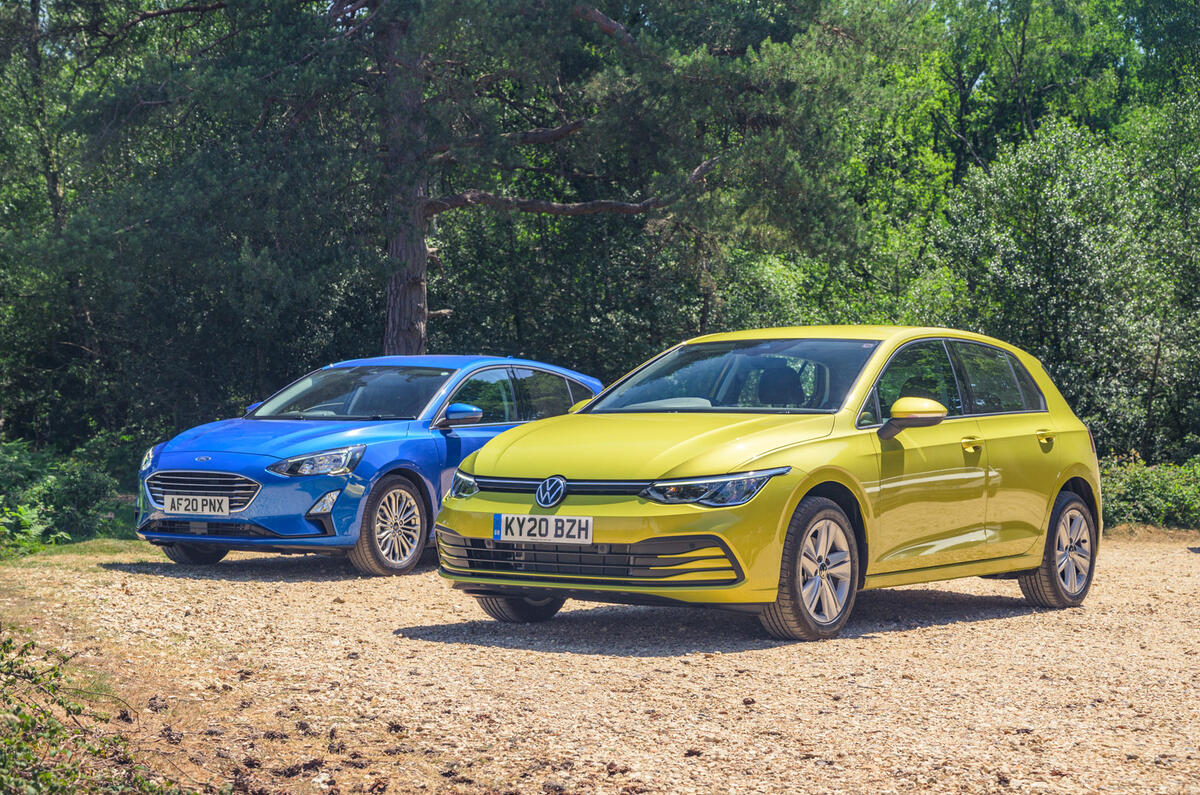
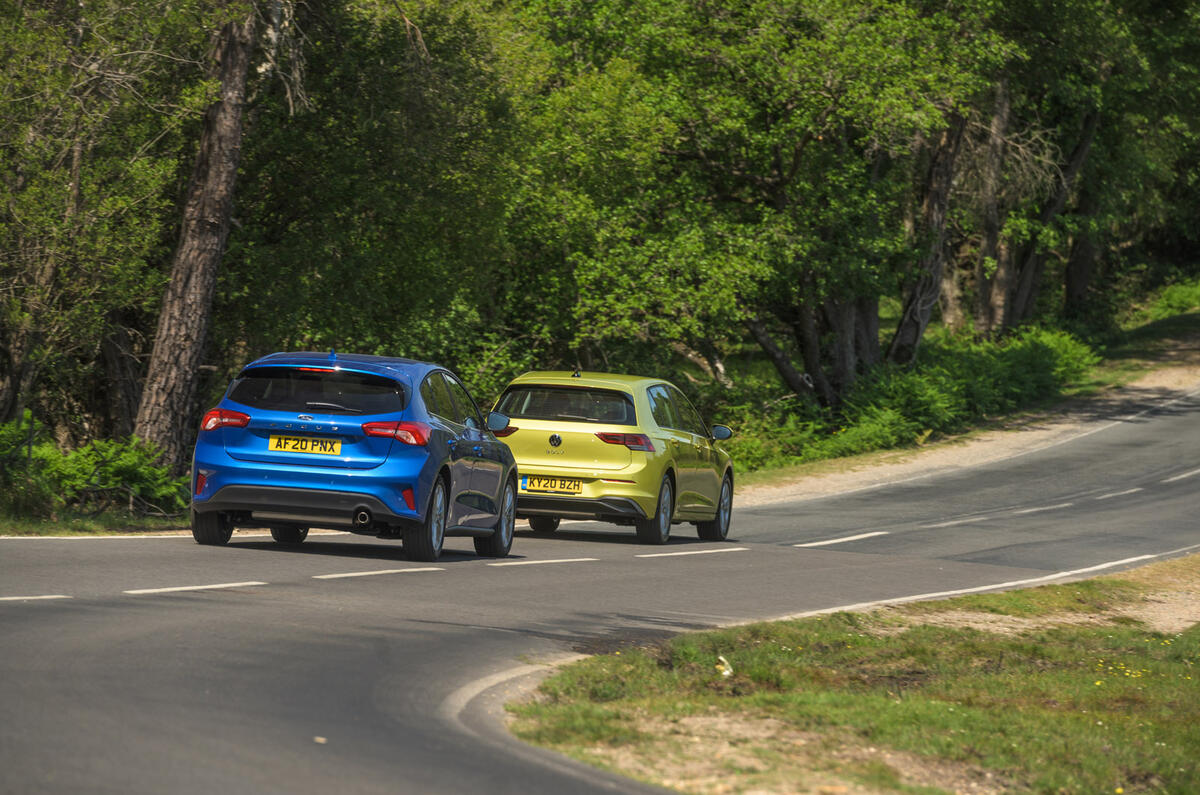
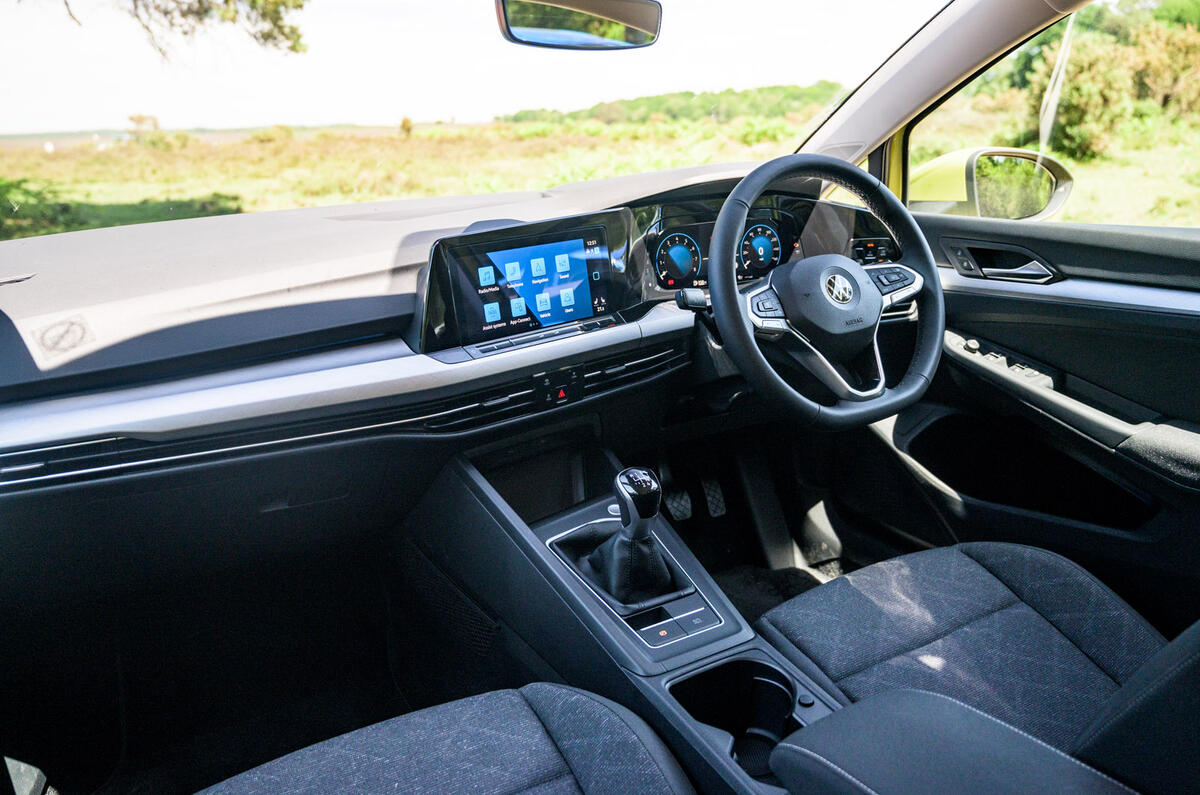
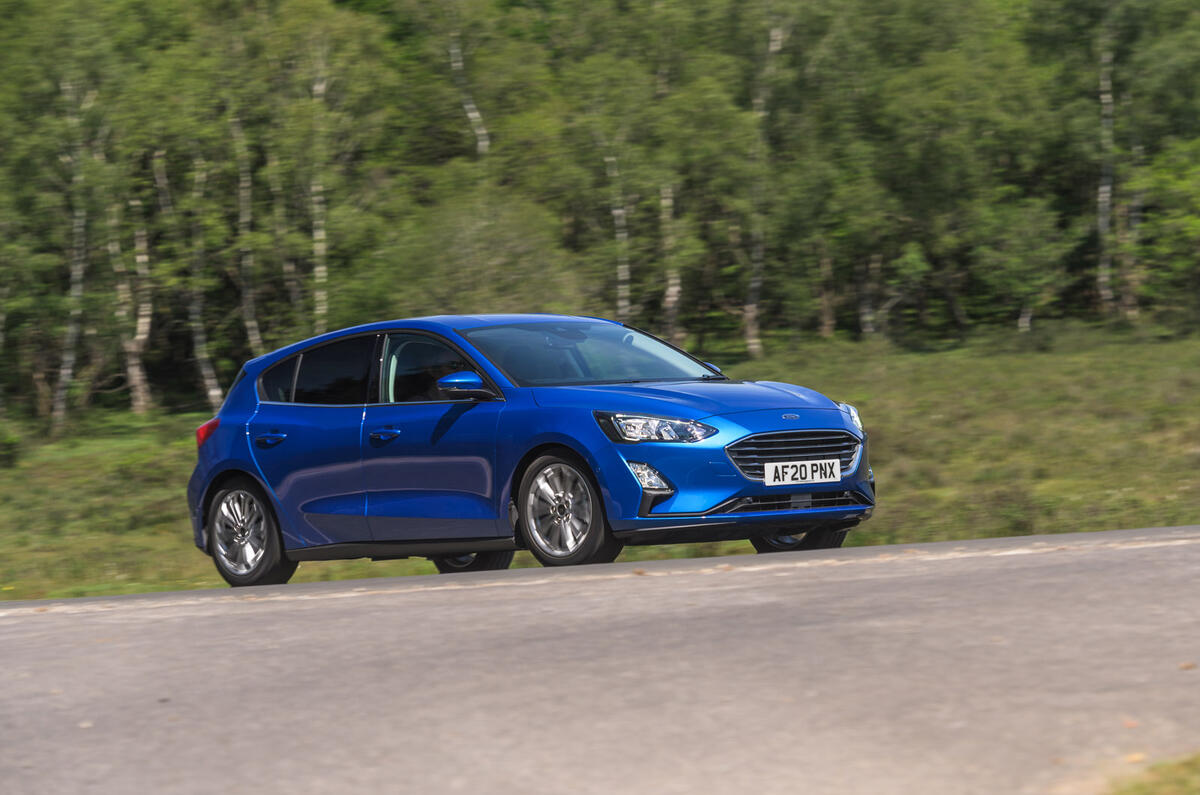
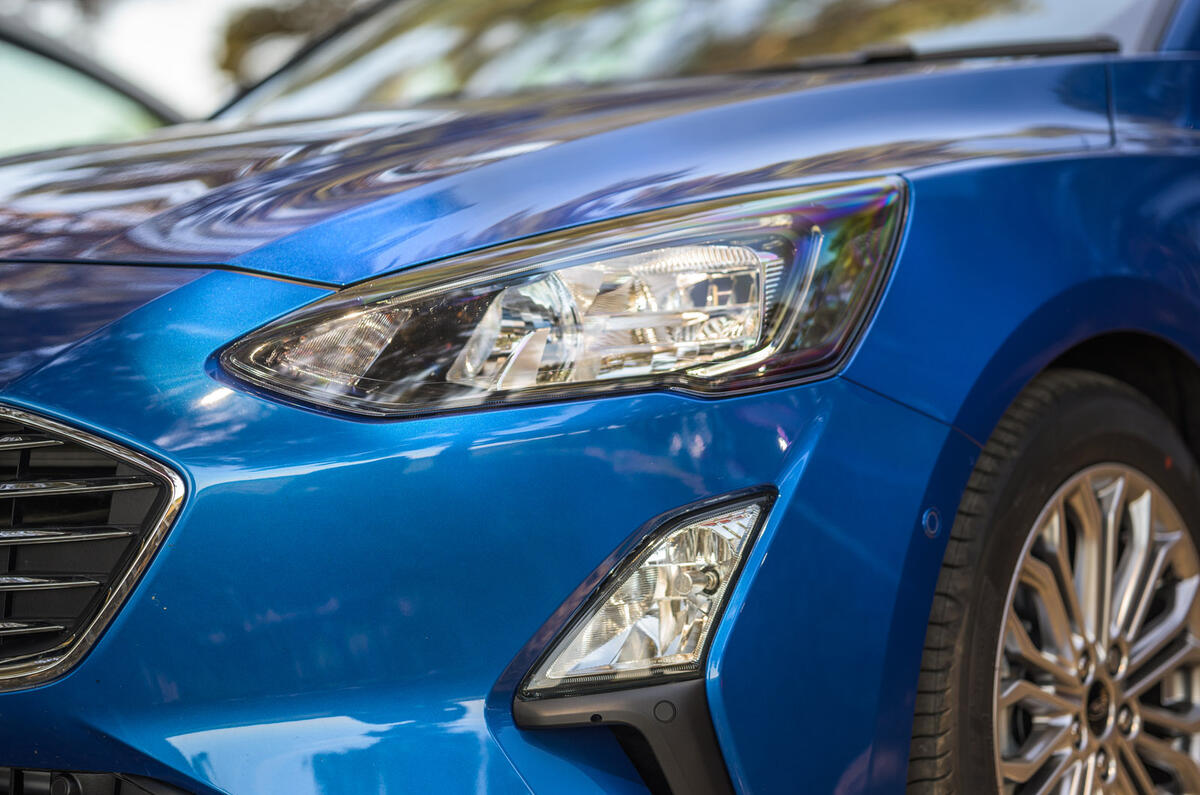
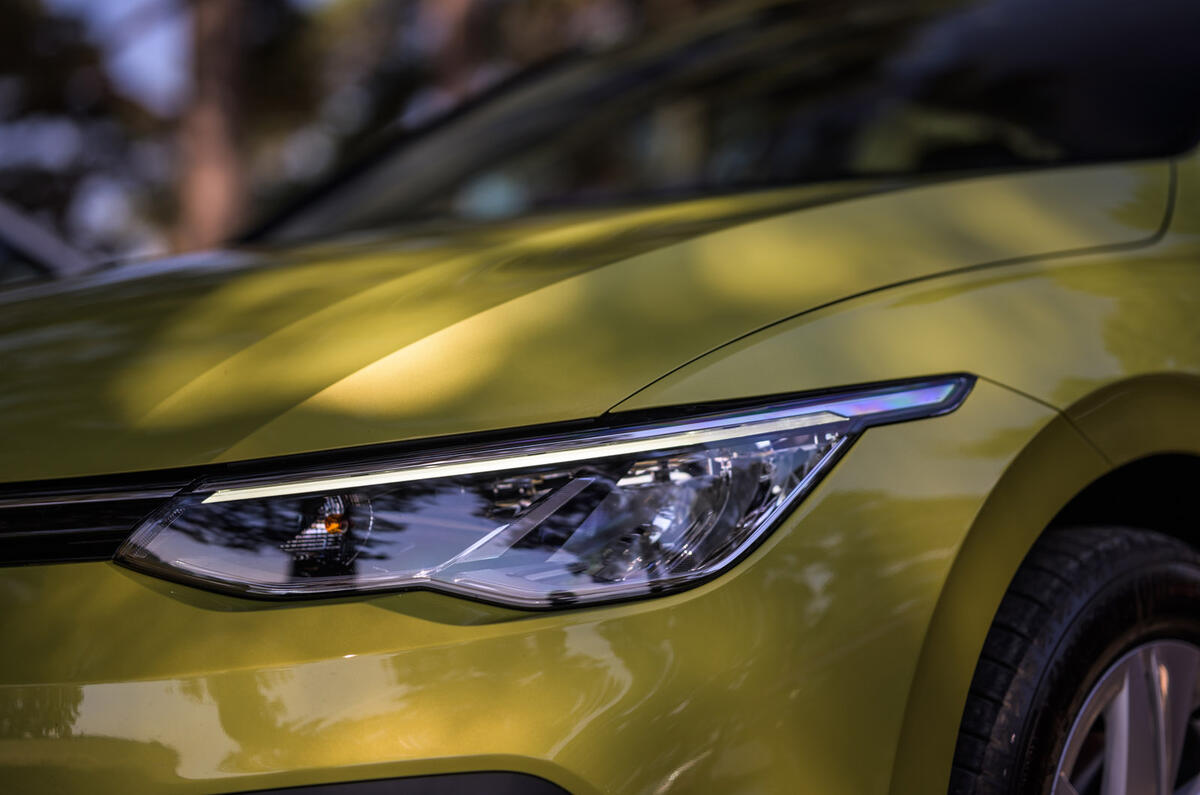
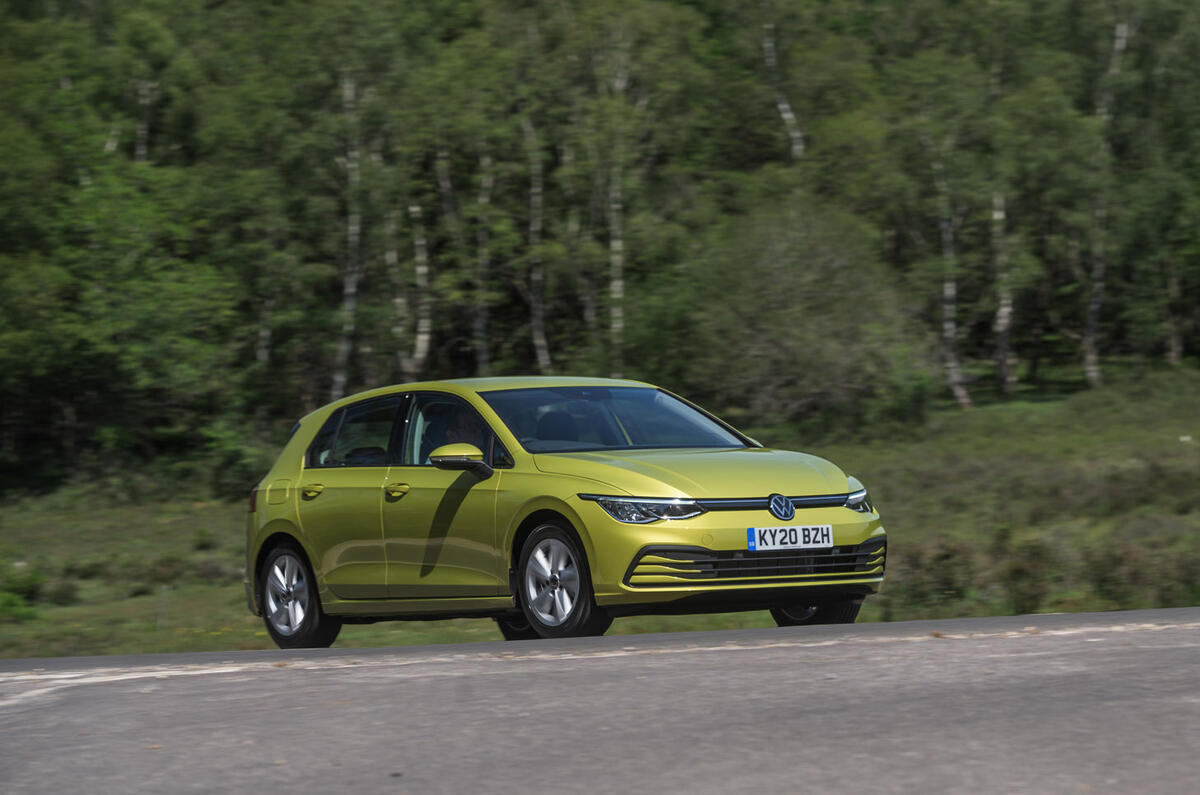
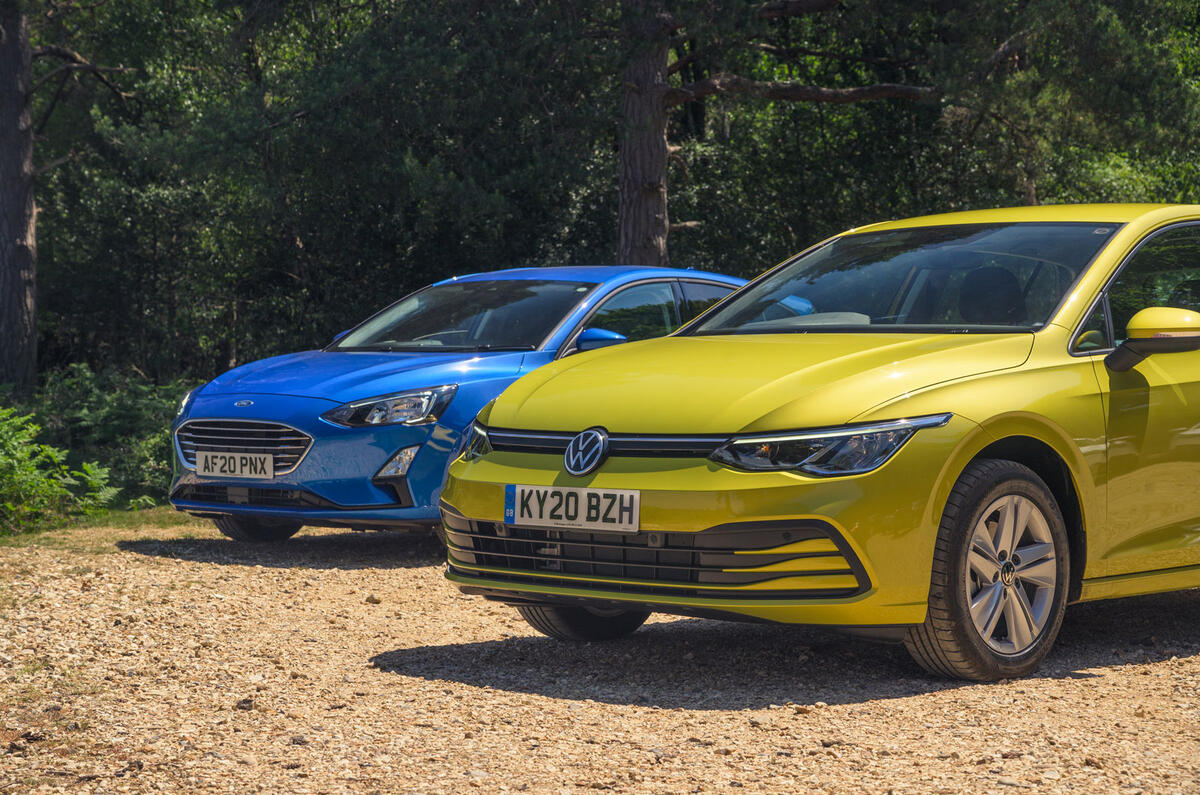
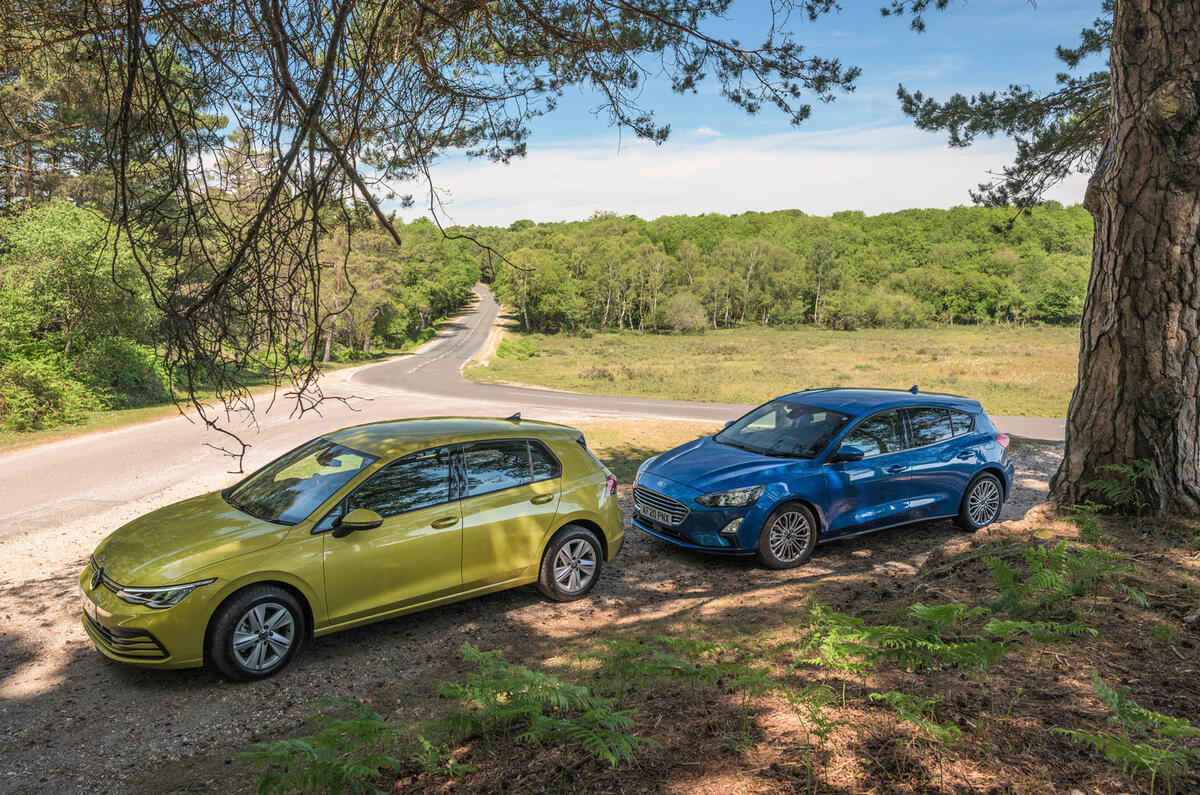
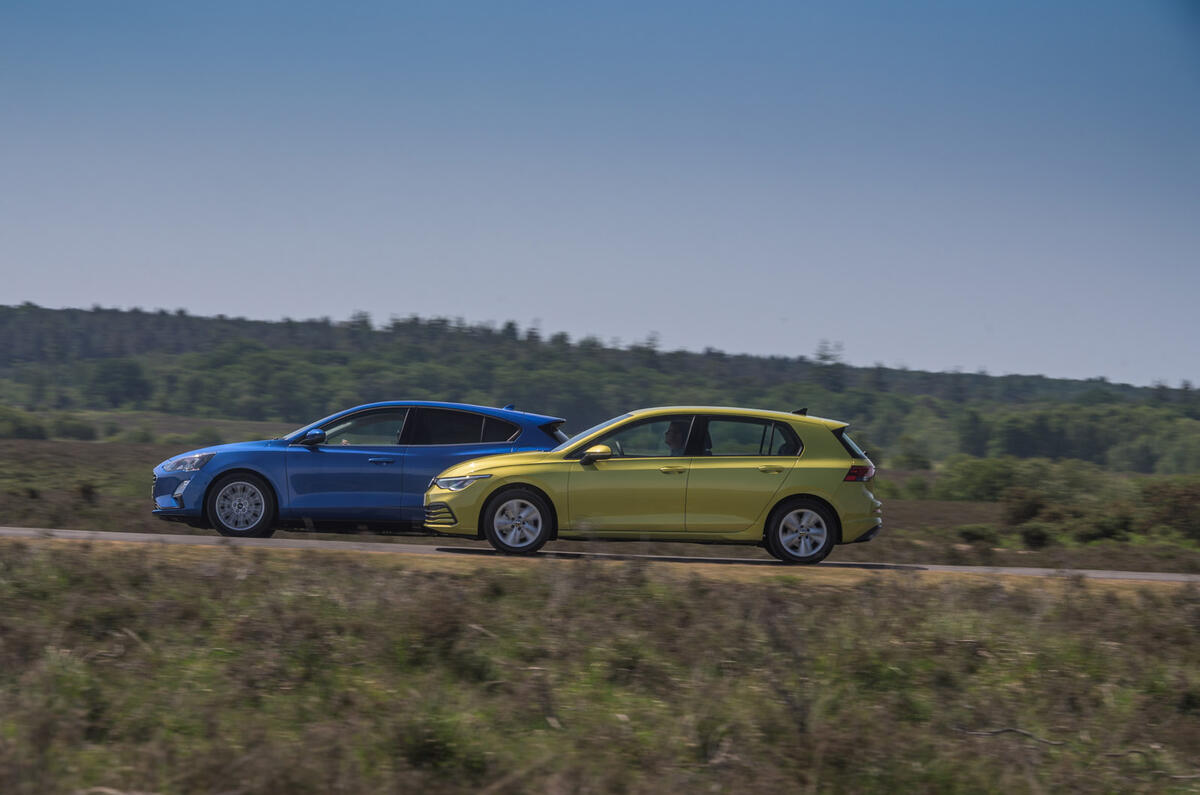
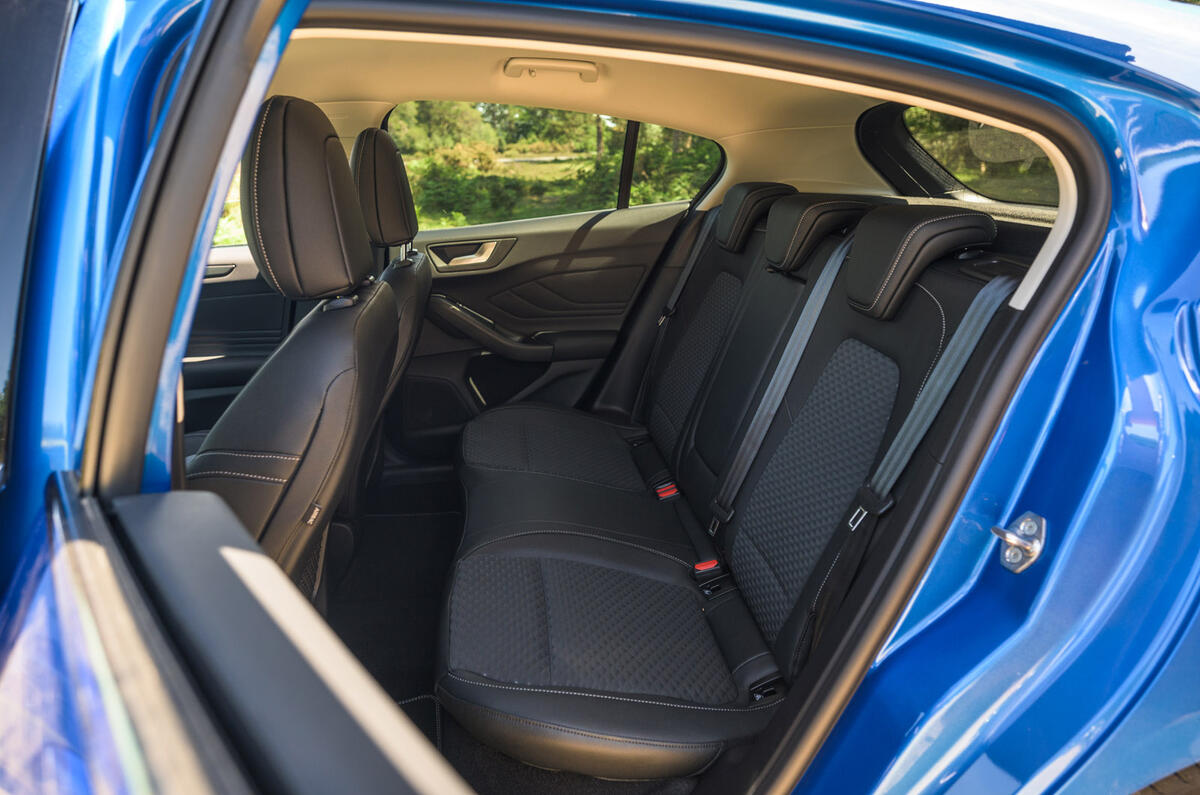
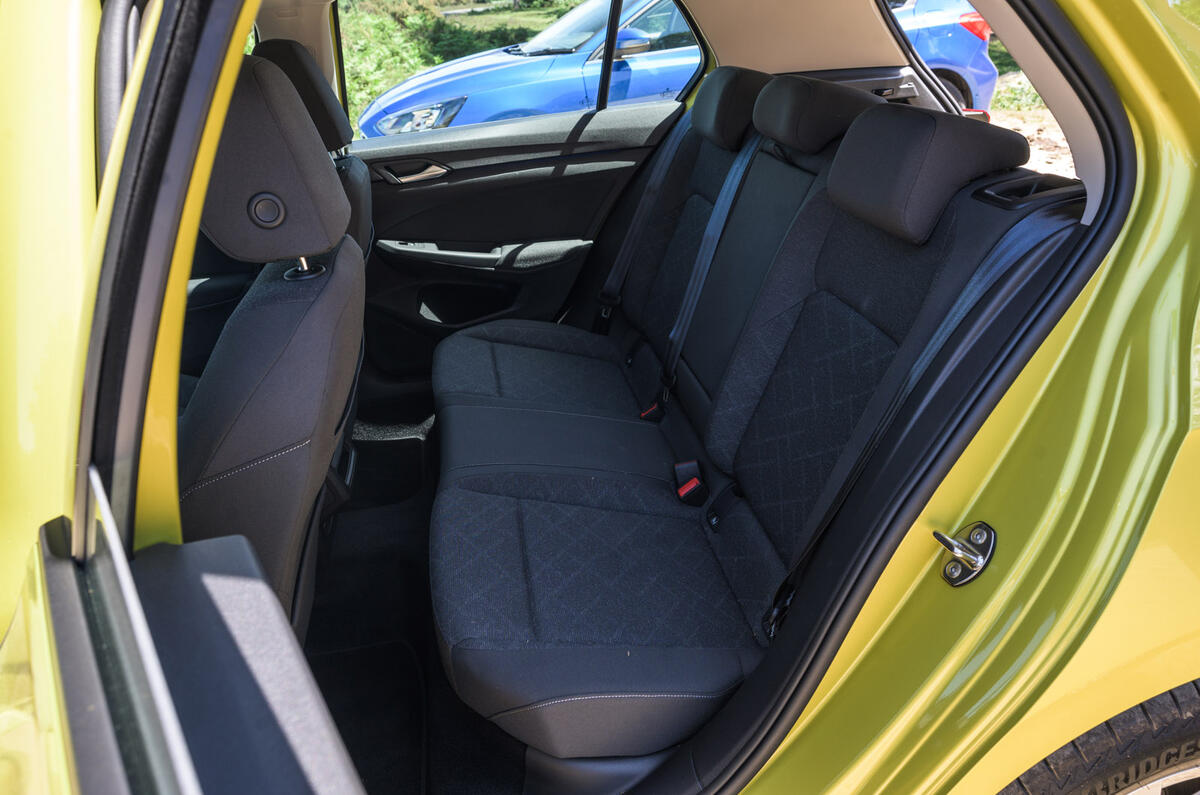
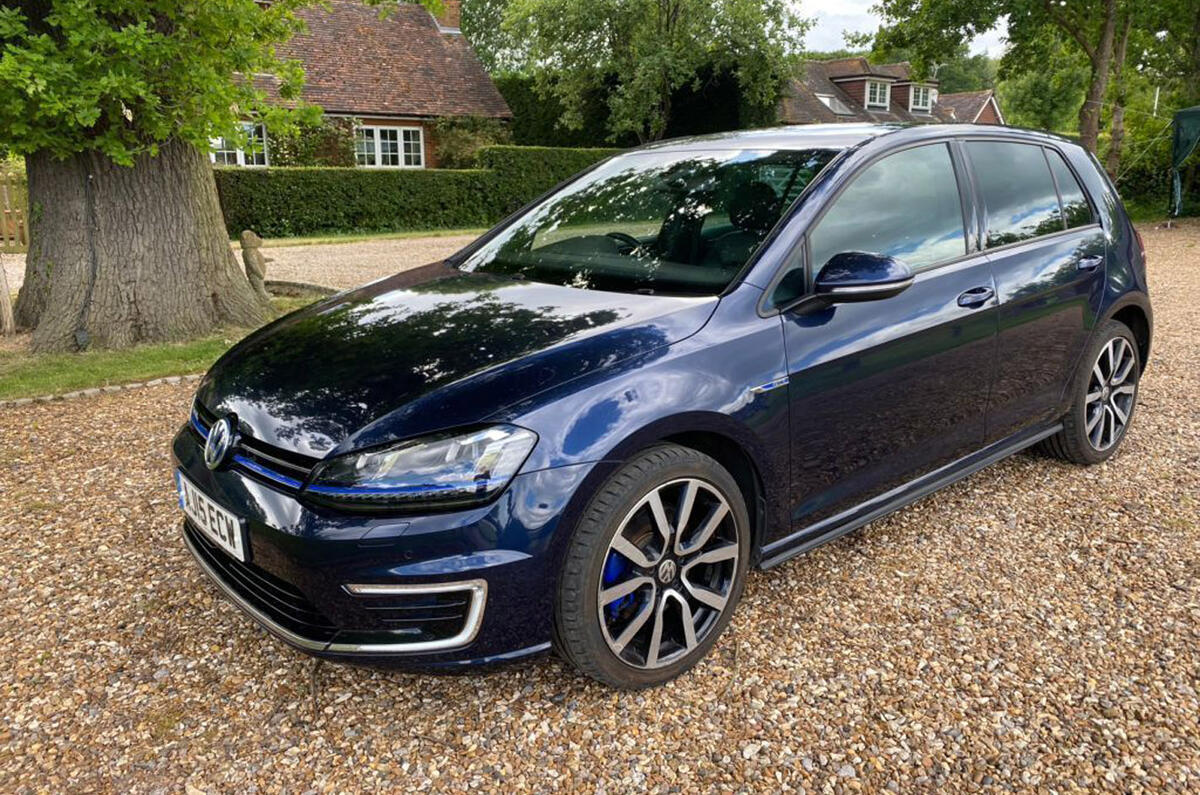
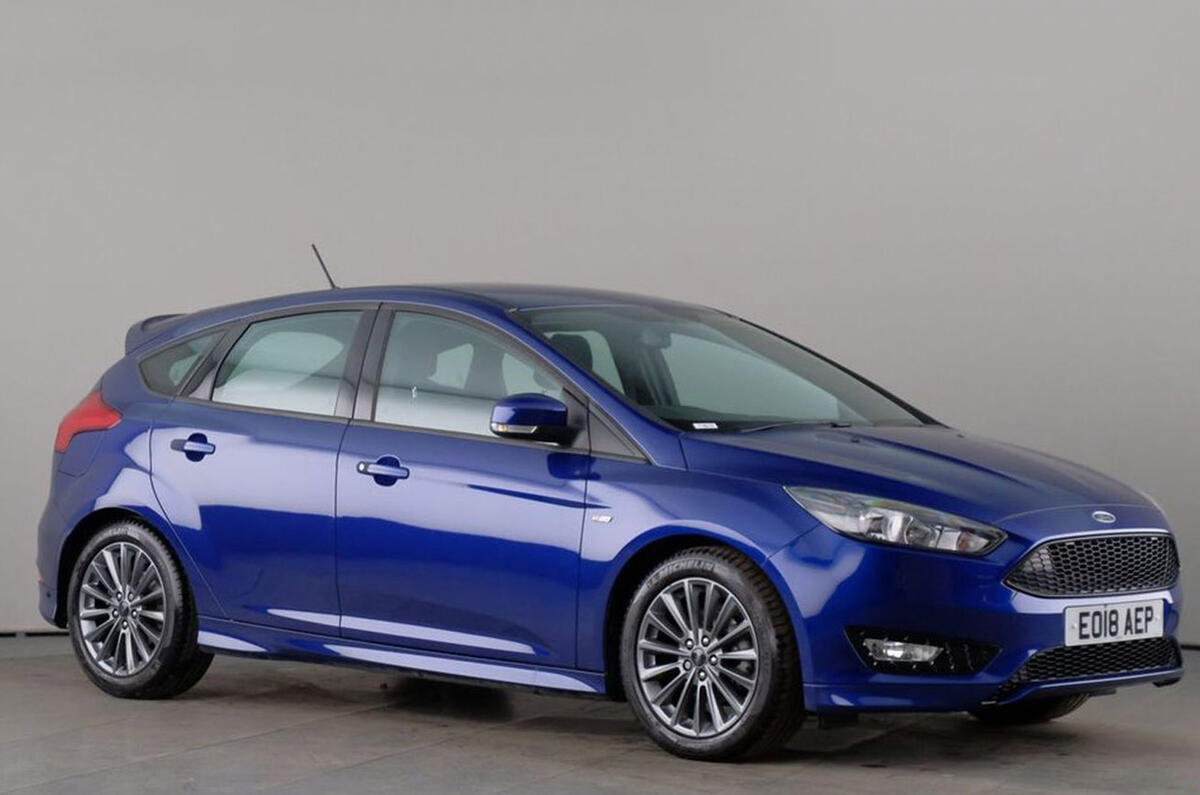
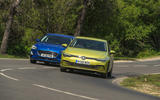
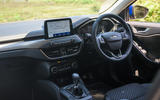
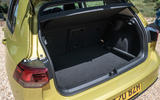
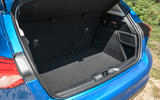
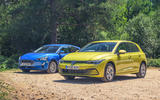
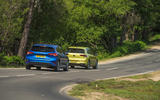
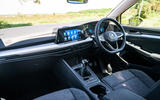
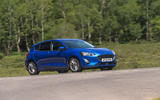
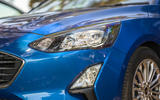
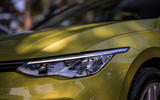
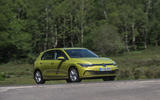
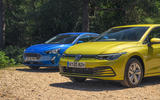
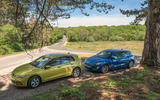
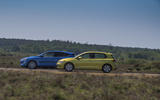
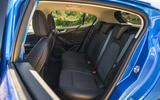
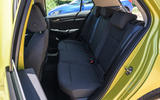
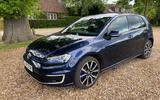







Join the debate
Add your comment
A 2016 Golf for £5395? I
A 2016 Golf for £5395? I think you must be looking at a scammers ad.
Finally...
Saunders glaringly omits a fatal flaw of the Golf; the recirculation can only be activated through the touchscreen. I regularly use this feature when smoky trucks are near me, and this just sucks big time in the Golf.
Also...
Saunders makes a great deal - read storm in a teacup - about the Focus not having adaptive cruise as standard, well it's part of a 500quid pack. Problem solved.